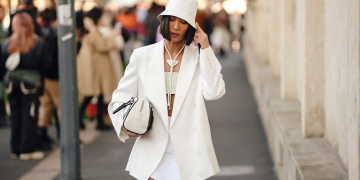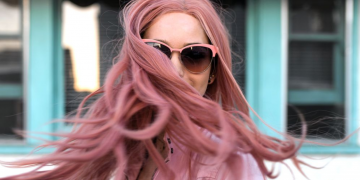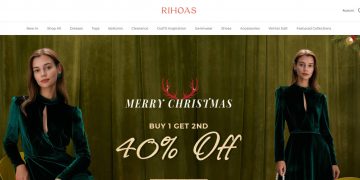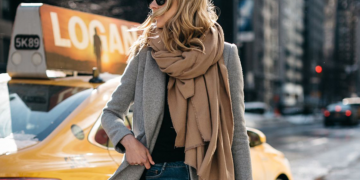Take Fabrizio Freda, president and CEO of the $17.7 billion beauty giant Estee Lauder Companies, for example.
“Our focus on hero products has been a successful strategy,” Freda told analysts last year. “Since fiscal 2019, this high repeat loyalty-inducing product has grown significantly as a portfolio of our business. Since the beginning, we have continued to innovate to drive our hero strategy for years to come. Innovation has been a strong catalyst for growth this year, once again accounting for more than 25 percent of sales.”
Seventy-five percent of Lauder’s business comes from tried-and-true heroes.
The trick is to position heroes not only as essential characters, but also as foundations, essential pillars of style that require spotlights and big marketing campaigns.
Some of the leading fashion companies have learned the ropes from Lauder, Nike Inc., Lululemon Athletica Inc. and others.
Lulu Lemon
Running and Training from Lululemon, which uses hero products and franchises to build.
The hero product now has a high-profile new evangelist in Stefan Larsson, CEO of PVH Corp. who has positioned the company’s Tommy Hilfiger and Calvin Klein brands to capitalize on its core offerings.
Larsson has been talking about the importance of hero products since he became CEO in 2021. But last month, in the fourth quarter sales were stronger than expected, rising 2% to $2.5 billion, which included a 1% drag from the war in Ukraine, while analysts expected a 2.5% decline.
Investors were pleased to see signs of increased traction, and Larsson believes the results validate his PVH+ strategic plan.
“I believe we are moving more and more to a consumer and competitive environment where every product needs to have an intent,” Larsson told WWD. “For us, staples are a way to focus on the most important products in the consumer’s closet. It’s about the intentionality of each product, and we’re building the core of what’s most important to the consumer. We’re building products around it. It’s a relentless pursuit of the best, most relevant, most used products.”
It’s about finding and crafting the look that is most relevant to the brand’s DNA and its customers – and then focusing on why that style is important now.
For Tommy Hilfiger, Shawn Mendes’ “Classics Reborn” campaign featured the company’s 1985 polo shirts and denim made from 20 percent post-consumer recycled cotton. At Calvin Klein, it starred Jennie Kim of Blackpink in an underwear campaign that felt a bit like the brand’s famous Kate Moss photo shoot of the ’90s, but with a more international feel that reflected today’s customers.
If a brand is getting excited about a hero product – driving their biggest business – that’s something both the marketing and finance teams can get behind.
If everyone is working together and the supply chain is ready to meet the demand created by marketing, a large, mature business becomes more dynamic.
While this sounds simple, this alignment is not always easy to achieve, especially because many marketing and store teams are trained to highlight attention-grabbing high-fashion looks that won’t directly drive sales.
Jessica Ramírez, senior research analyst at Jane Hali & Associates, says fashion companies have been focusing more on their staple products as a way to try to control inventory and reduce price cuts.
But this cycle – in which brands grab every sale by adding looks and eventually lead to the need to clear inventory – has been with the fashion industry for a long time.
“When you look at retail apparel, it’s a very old industry, and it’s a very powerful dynamic with a lot of moving parts,” Ramírez says. “It’s hard to break that norm.”
But COVID-19 broke all norms and helped reboot the industry.
Ramírez says, “The pandemic stopped every person, every moving part of the business, and was able to get the machine running again in a way that could start solving problems.”
This allows companies to better connect everything, from consumer experience to marketing to inventory on hand.
“The freshness is exciting and the consistency keeps people coming back,” said Simeon Siegel, senior analyst at BMO Capital Markets. “To be a multi-billion dollar business, you have to have a hero/consistent product. There is no company in the world that can create a business [that big] with just a limited number of drops. There is not enough consumer demand. There’s not enough consistency to forecast that business. That company would die.”
While every big business has the necessary hero products, using them as a marketing tool is a new approach, Siegel says.
A more targeted approach may be just right for 2023.
Bryan Eshelman, managing director of AlixPartners’ retail practice, said, “The concept of four or even two seasons in the history of the retail business is really declining, starting with the wear-now movement before COVID[-19]. And it’s accelerated by the level of e-commerce penetration and social media shopping post-COVID[-19]. Even with climate change, just the cycle of weather is working against us in terms of when it’s appropriate to buy sweaters.
“It forces a marketing approach that builds business around these key iconic items that are commercial and sell well, but introduces customers to the brand because they’re must-haves, and then starts building a closet around it,” Eshelman says.
But heroes don’t always save brands – and fashion companies have to save themselves.
“The cautionary tale is that you have to know when to stop chasing that hero product and not stray too far from your skis,” Eshelman says. “Many retailers have been assuming that the double-digit growth you saw in early ’21 and early ’22 will continue. There’s a trend of trying to anniversary, but you can’t honor a hero product forever.”
Translated with www.DeepL.com/Translator (free version)




























